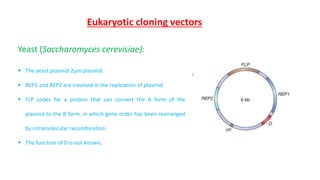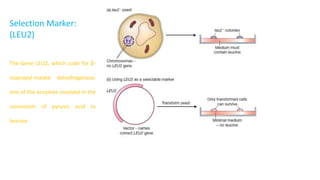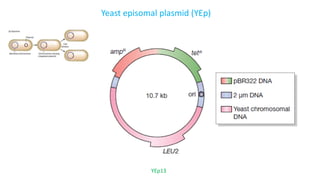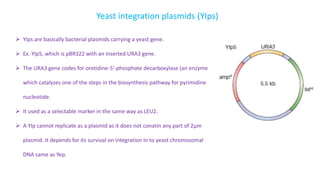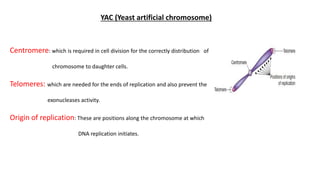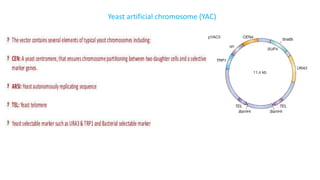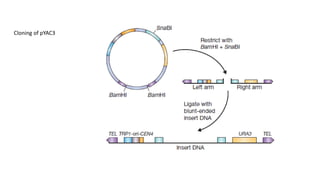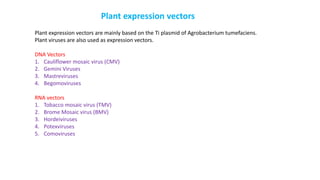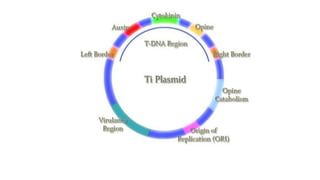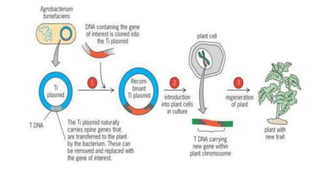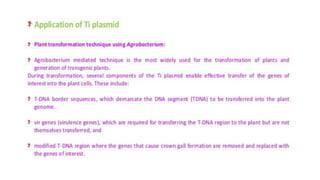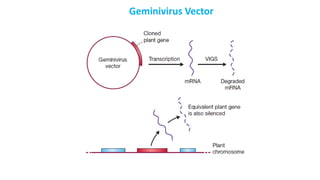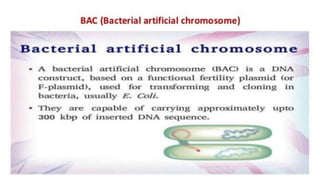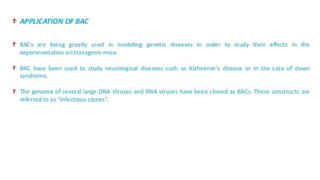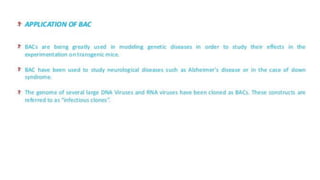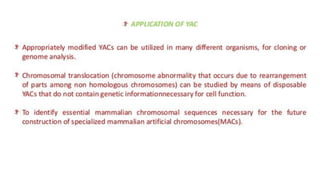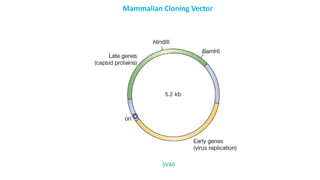Eukaryotic cloning vector for genetic diversity analysis
- 1. Eukaryotic cloning vectors Yeast (Saccharomyces cerevisiae): ? The yeast plasmid 2μm plasmid. ? REP1 and REP2 are involved in the replication of plasmid. ? FLP codes for a protein that can convert the A form of the plasmid to the B form, in which gene order has been rearranged by intramolecular recombination. ? The function of D is not known.
- 2. Selection Marker: (LEU2) The Gene LEU2, which code for β- isopropyl-malate dehydrogenase, one of the enzymes involved in the conversion of pyruvic acid to leucine.
- 3. Yeast episomal plasmid (YEp) YEp13
- 4. Yeast integration plasmids (YIps) ? YIps are basically bacterial plasmids carrying a yeast gene. ? Ex. YIp5, which is pBR322 with an inserted URA3 gene. ? The URA3 gene codes for orotidine-5¨-phosphate decarboxylase (an enzyme which catalyzes one of the steps in the biosynthesis pathway for pyrimidine nucleotide. ? It used as a selectable marker in the same way as LEU2. ? A YIp cannot replicate as a plasmid as it does not conatin any part of 2μm plasmid. It depends for its survival on integration in to yeast chromosomal DNA same as Yep.
- 5. Yeast replicative plasmid (YRps) YRp7 ? YRps are able to multiply as independent plasmid because they carry a chromosomal sequence that includes an origin of replication. ? Ex. YRp7 is made up of pBR322 plus the yeast gene TRP1. ? TRP1 is code for the enzymes N-(5'- phosphoribosyl)anthranilate isomerase, which is involved in tryptophan biosynthesis. ? The yeast DNA fragment in YEp7 contain both TRP1 and the origin.
- 6. YAC (Yeast artificial chromosome) Centromere: which is required in cell division for the correctly distribution of chromosome to daughter cells. Telomeres: which are needed for the ends of replication and also prevent the exonucleases activity. Origin of replication: These are positions along the chromosome at which DNA replication initiates.
- 7. Yeast artificial chromosome (YAC)
- 9. Plant expression vectors Plant expression vectors are mainly based on the Ti plasmid of Agrobacterium tumefaciens. Plant viruses are also used as expression vectors. DNA Vectors 1. Cauliflower mosaic virus (CMV) 2. Gemini Viruses 3. Mastreviruses 4. Begomoviruses RNA vectors 1. Tobacco mosaic virus (TMV) 2. Brome Mosaic virus (BMV) 3. Hordeiviruses 4. Potexviruses 5. Comoviruses
- 16. Insect vector: P element
- 17. Direct gene transfer Direct gene transfer in nucleus
- 19. Bacterial artificial Chromosome (BAC)
- 25. Time.
